Image Recovery of an Infrared Sub-Imaging System Based on Compressed Sensing
Abstract
:1. Introduction
2. Relevant Background
2.1. Compressed Sensing
2.2. Infrared Rosette Scan Sub-Imaging System
3. Multi-Frame Joint Compressive Imaging Method
3.1. IFOV Measurement Matrix
3.2. Multi-Frame Joint Compressive Imaging
4. Simulations and Discussions
4.1. IFOV Measurement Matrices
4.2. Multi-Frame Joint Compressive Imaging
5. Conclusions
Acknowledgments
Author Contributions
Conflicts of Interest
References
- Donoho, D.L. Compressed sensing. IEEE Trans. Inf. Theory 2006, 52, 1289–1306. [Google Scholar] [CrossRef]
- Candes, E.J.; Tao, T. Decoding by linear programming. IEEE Trans. Inf. Theory 2006, 51, 4203–4215. [Google Scholar] [CrossRef]
- Candes, E.J.; Romberg, J.; Tao, T. Robust uncertainty principles: Exact signal reconstruction from highly incomplete frequency information. IEEE Trans. Inf. Theory 2004, 52, 489–509. [Google Scholar] [CrossRef]
- Jahng, S.G.; Hong, H.K.; Han, S.H.; Choi, J.S. Dynamic simulation of the rosette scanning infrared seeker and an infrared counter-countermeasure using the moment technique. Opt. Eng. 1999, 38, 921–928. [Google Scholar] [CrossRef]
- Jahng, S.G.; Hong, H.K.; Seo, D.S.; Choi, J.S. New infrared counter-countermeasure technique using an iterative self-organizing data analysis algorithm for the rosette scanning infrared seeker. Opt. Eng. 2000, 39, 2397–2404. [Google Scholar] [CrossRef]
- Rodger, J.A. Toward reducing failure risk in an integrated vehicle health maintenance system: A fuzzy multi-sensor data fusion kalman filter approach for ivhms. Expert Syst. Appl. 2012, 39, 9821–9836. [Google Scholar] [CrossRef]
- Uzeler, H.; Aytaç, T. Image generation for single detector infrared seekers via compressive sensing. J. Asian Stud. 2013, 49, 460–473. [Google Scholar]
- Uzeler, H.; Cakir, S.; Aytaç, T. Image reconstruction for single detector rosette scanning systems based on compressive sensing theory. Opt. Eng. 2016, 55, 023108. [Google Scholar] [CrossRef]
- Uzeler, H.; Aytaç, T. Compressive sensing applications for single detector rosette scanning infrared seekers. In Proceedings of the Electro-Optical and Infrared Systems: Technology and Applications XII and Quantum Information Science and Technology, San Francisco, CA, USA, 8–12 February 2015; pp. 1–4. [Google Scholar]
- Zhao, M.; Liu, J.; Chen, S.; Kang, C.; Xu, W. Single-pixel imaging with deterministic complex-valued sensing matrices. J. Eur. Opt. Soc. Rapid Publ. 2015, 10. [Google Scholar] [CrossRef]
- Shin, J.; Bosworth, B.T.; Foster, M.A. Single-pixel imaging using compressed sensing and wavelength-dependent scattering. Opt. Lett. 2016, 41, 886. [Google Scholar] [CrossRef]
- Duarte, M.F.; Davenport, M.A.; Takhar, D.; Laska, J.N.; Sun, T.; Kelly, K.F.; Baraniuk, R.G. Single-pixel imaging via compressive sampling. IEEE Signal Process. Mag. 2008, 25, 83–91. [Google Scholar] [CrossRef]
- Chan, W.L.; Charan, K.; Takhar, D.; Kelly, K.F.; Baraniuk, R.G.; Mittleman, D.M. A single-pixel terahertz imaging system based on compressed sensing. Appl. Phys. Lett. 2008, 93, 121105. [Google Scholar] [CrossRef]
- Natarajan, B.K. Sparse approximate solutions to linear systems. Siam J. Comput. 1995, 24, 227–234. [Google Scholar] [CrossRef]
- Candès, E.J. The restricted isometry property and its implications for compressed sensing. Comptes Rendus Math. 2008, 346, 589–592. [Google Scholar] [CrossRef]
- Tropp, J.A.; Gilbert, A.C. Signal recovery from random measurements via orthogonal matching pursuit. IEEE Trans. Inf. Theory 2007, 53, 4655–4666. [Google Scholar] [CrossRef]
- Donoho, D.L.; Tsaig, Y.; Drori, I.; Starck, J.L. Sparse solution of underdetermined systems of linear equations by stagewise orthogonal matching pursuit. IEEE Trans. Inf. Theory 2012, 58, 1094–1121. [Google Scholar] [CrossRef]
- Needell, D.; Vershynin, R. Signal recovery from incomplete and inaccurate measurements via regularized orthogonal matching pursuit. IEEE J. Sel. Top. Signal Process. 2007, 4, 310–316. [Google Scholar] [CrossRef]
- Dai, W.; Milenkovic, O. Subspace pursuit for compressive sensing signal reconstruction. IEEE Trans. Inf. Theory 2009, 55, 2230–2249. [Google Scholar] [CrossRef]
- Li, S.; Gao, F.; Ge, G.; Zhang, S. Deterministic construction of compressed sensing matrices via algebraic curves. IEEE Trans. Inf. Theory 2012, 58, 5035–5041. [Google Scholar] [CrossRef]
- Devore, R.A. Deterministic constructions of compressed sensing matrices. J. Complex. 2007, 23, 918–925. [Google Scholar] [CrossRef]
- Naidu, R.R.; Jampana, P.; Sastry, C.S. Deterministic compressed sensing matrices: Construction via euler squares and applications. IEEE Trans. Signal Process. 2016, 64, 3566–3575. [Google Scholar] [CrossRef]
- Neifeld, M.A.; Ke, J. Optical architectures for compressive imaging. Appl. Opt. 2007, 46, 5293. [Google Scholar] [CrossRef]
- Takhar, D.; Laska, J.N.; Wakin, M.B.; Duarte, M.F.; Baron, D.; Sarvotham, S.; Kelly, K.F.; Baraniuk, R.G. A new compressive imaging camera architecture using optical-domain compression. In Proceedings of the Computational Imaging IV, San Jose, CA, USA, 2 February 2006. [Google Scholar] [CrossRef]
- Sui, X.; Chen, Q.; Gu, G.; Shen, X. Infrared super-resolution imaging based on compressed sensing. Infrared Phys. Technol. 2014, 63, 119–124. [Google Scholar] [CrossRef]
- Jian, W.; Kwon, S.; Shim, B. Generalized orthogonal matching pursuit. IEEE Trans. Signal Process. 2014, 60, 6202–6216. [Google Scholar] [CrossRef]

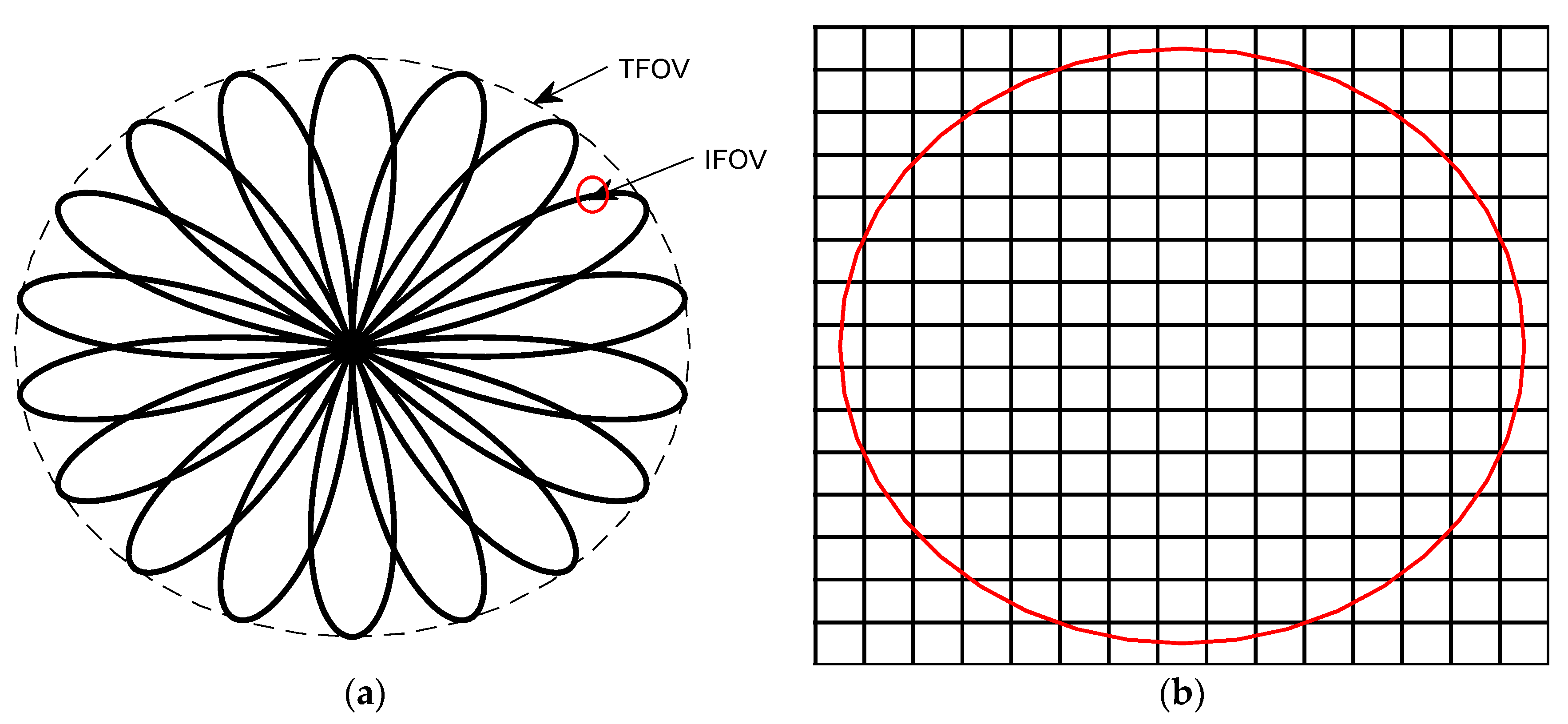
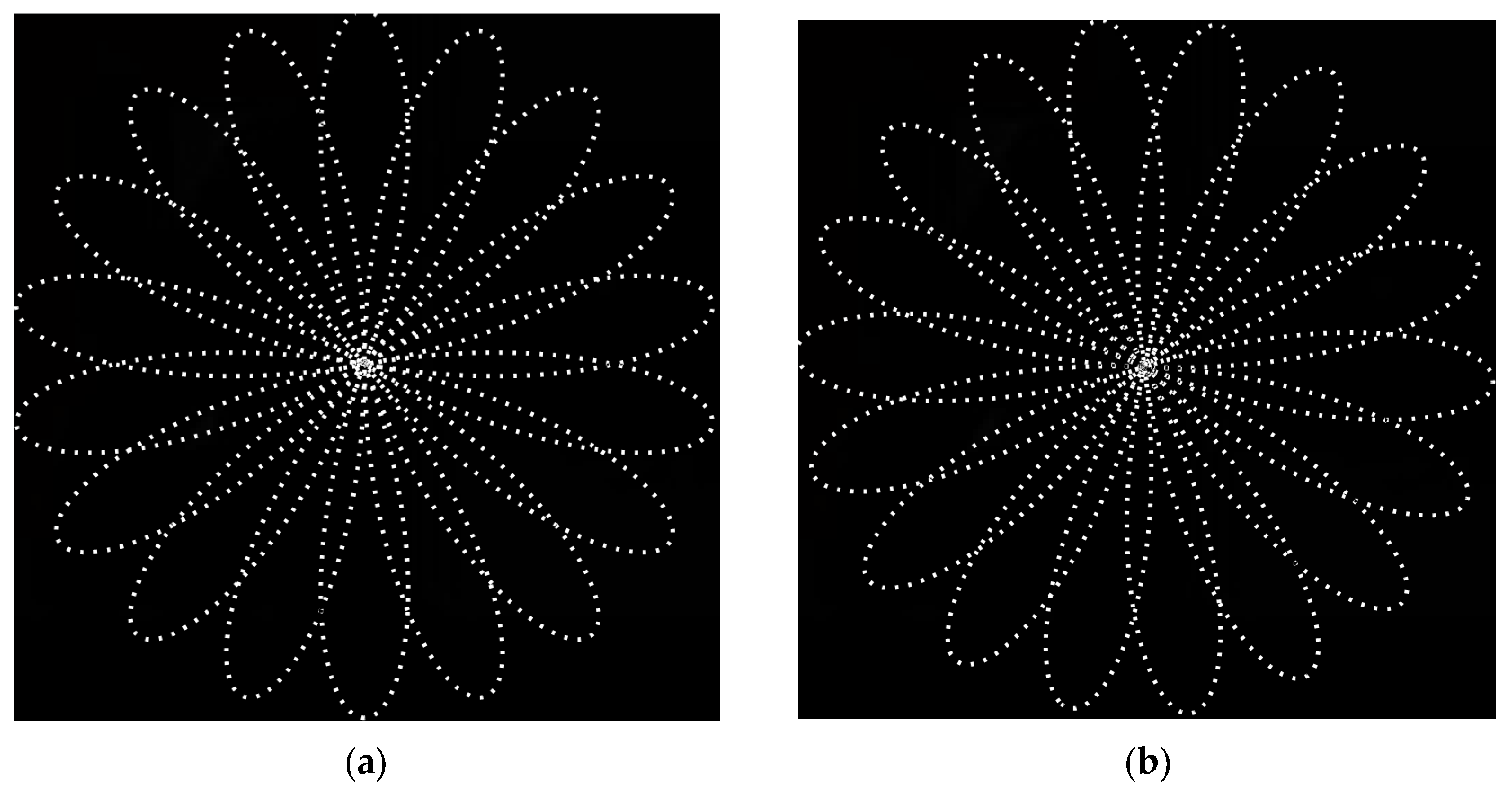
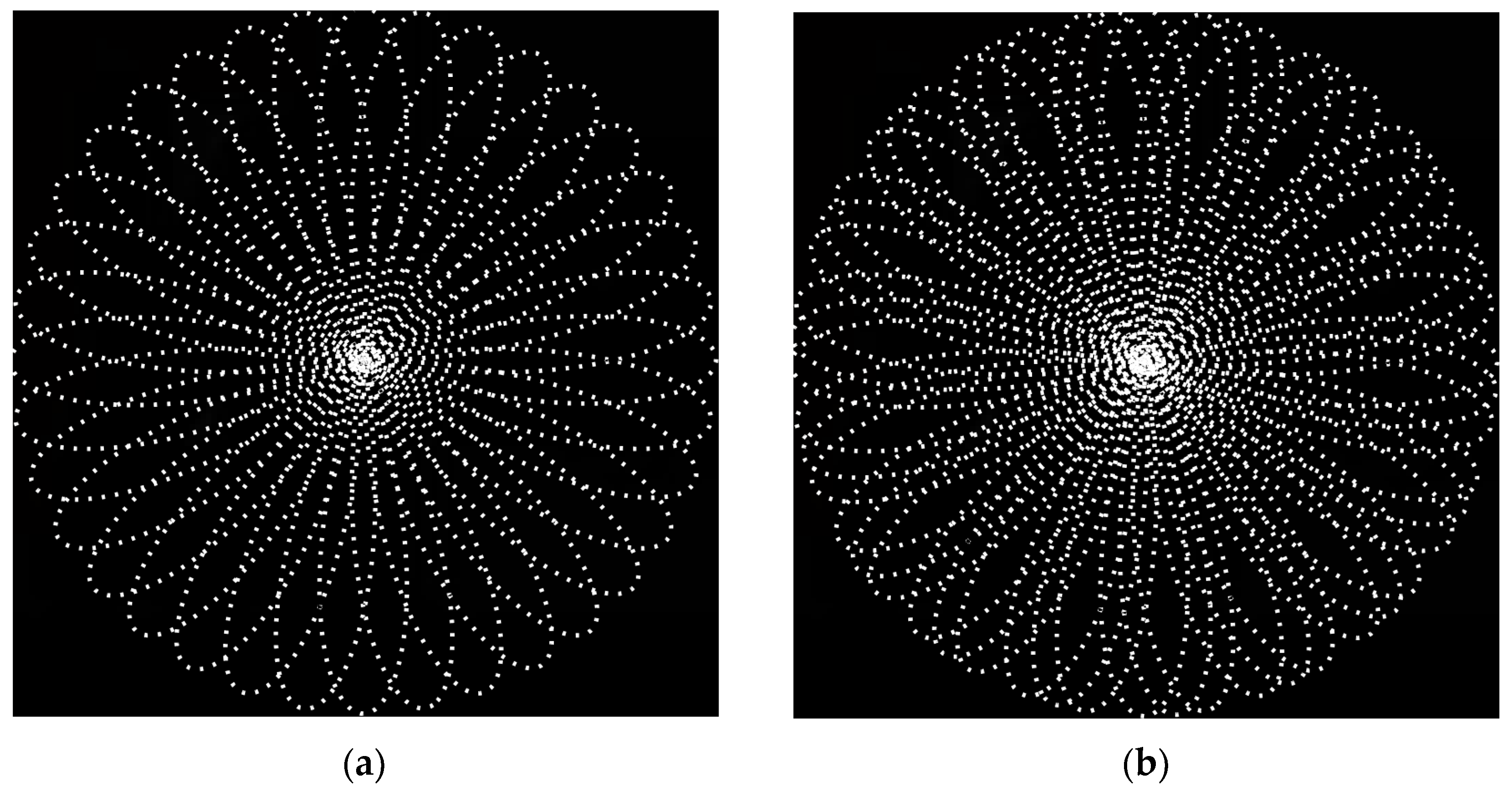
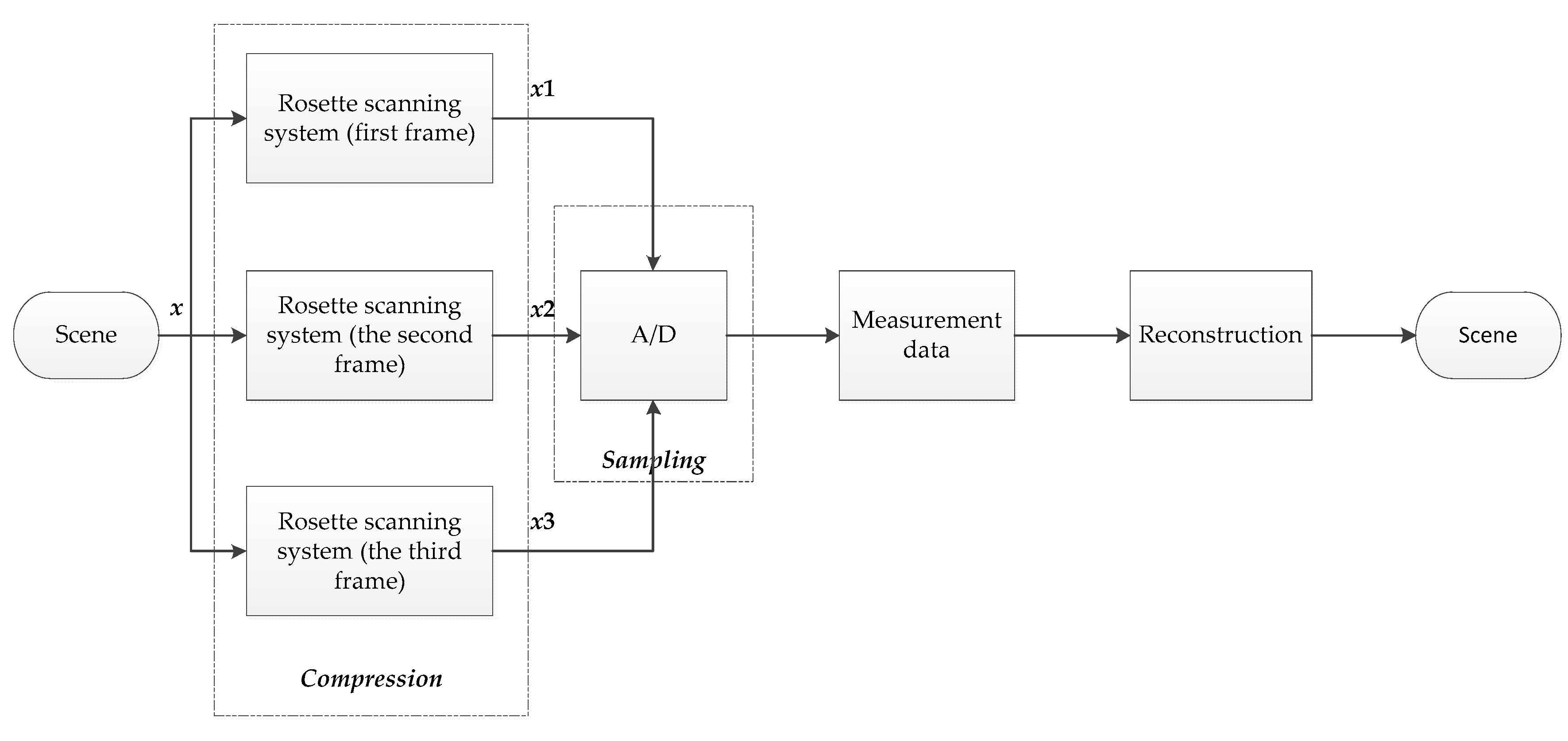
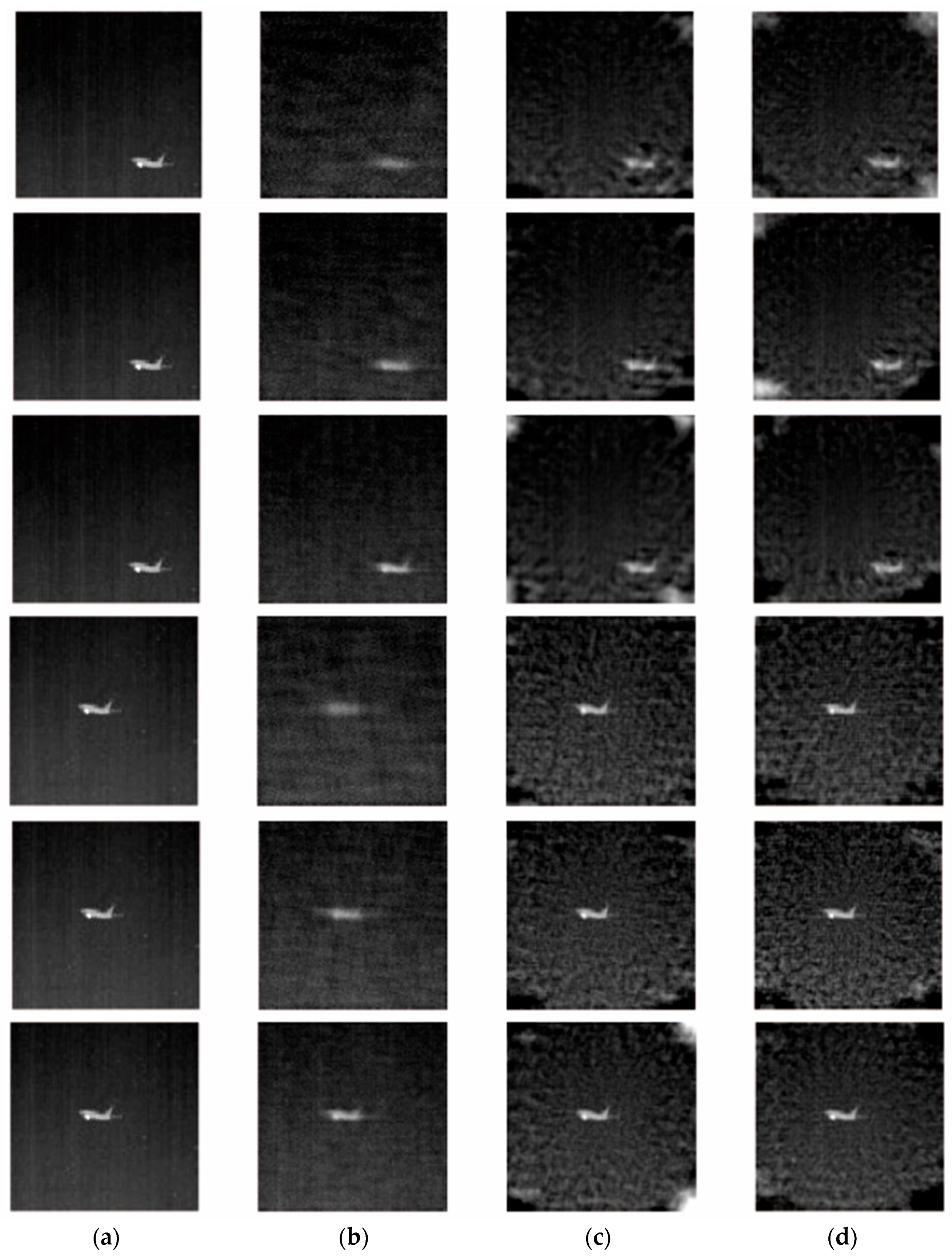

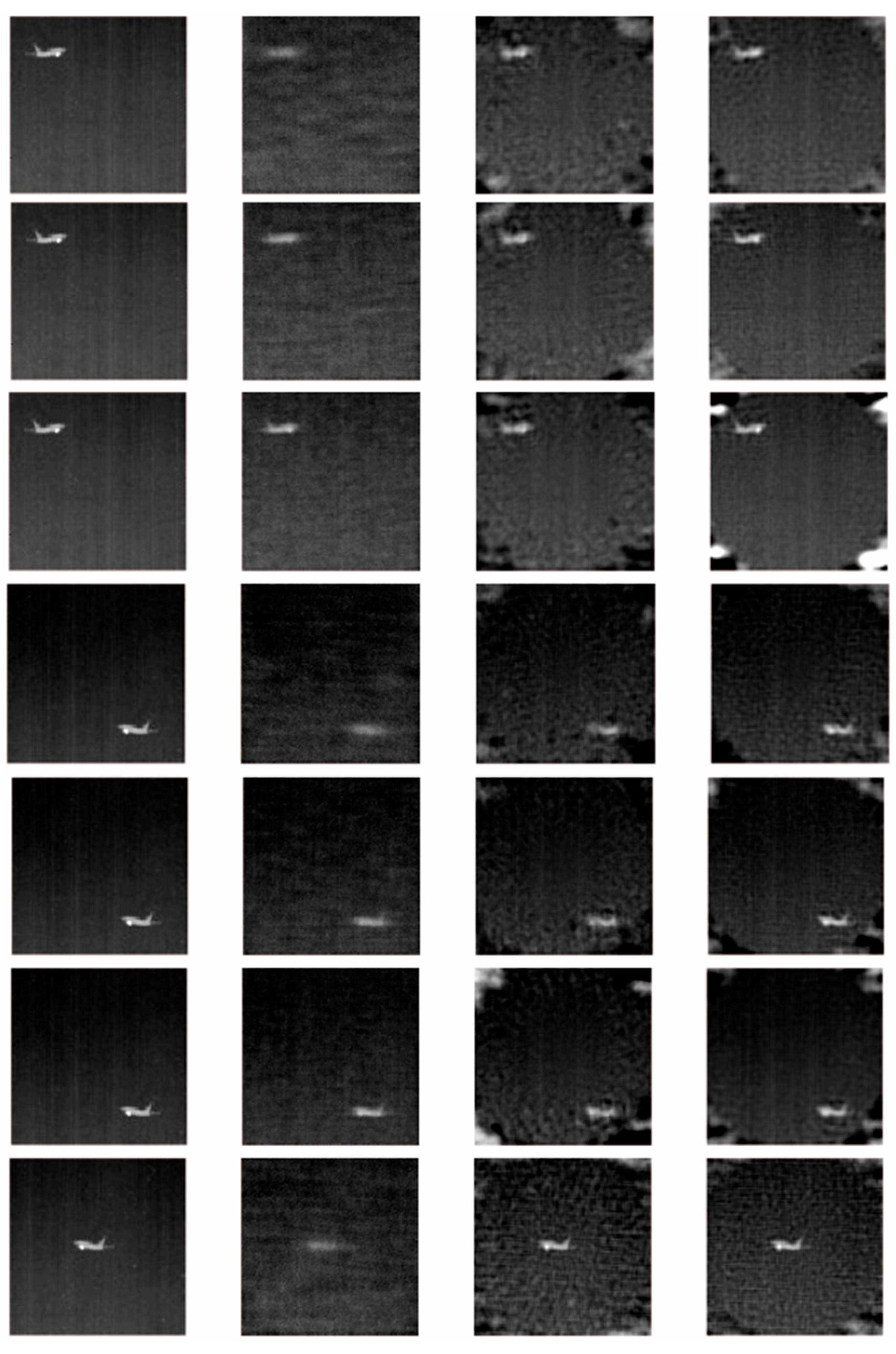
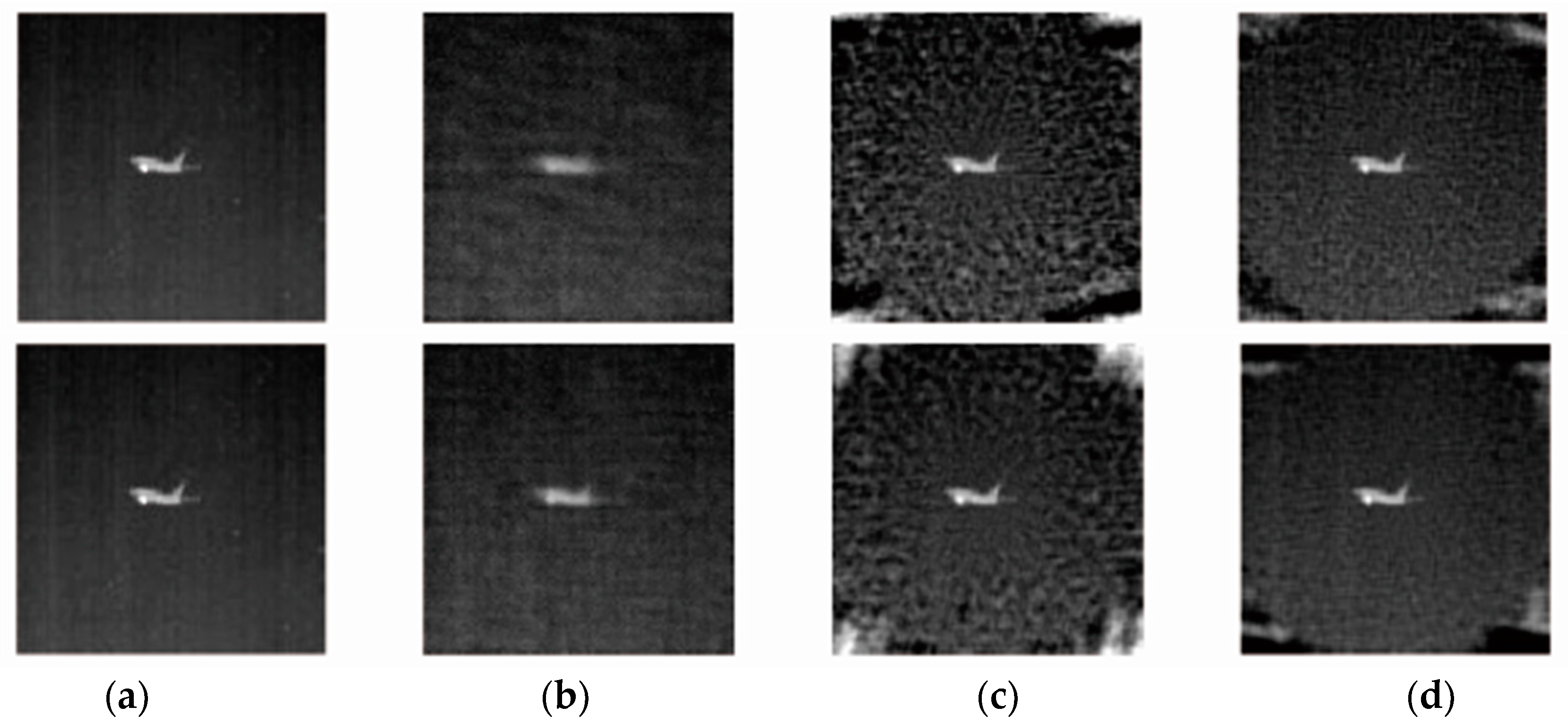
| Sampling Method | 1500 Samples | 2700 Samples | 4200 Samples |
|---|---|---|---|
| Gaussian | 25.4 | 27.8 | 29.4 |
| Single-frame | 25.1 | 24.6 | 24.2 |
| Two-frame joint | 26.9 | 25.9 | 25.6 |
| Three-frame joint | 27.6 | 28.1 | 26.3 |
| Sampling Method | IFOV Size | 1500 Samples | 2700 Samples | 4200 Samples |
|---|---|---|---|---|
| Two-frame joint | 12.1 | 15.2 | 50.4 | |
| 13.3 | 45.1 | 58.4 | ||
| Three-frame joint | 11.7 | 89.4 | 34.9 | |
| 18.4 | 44.7 | 74.5 |
© 2017 by the authors. Licensee MDPI, Basel, Switzerland. This article is an open access article distributed under the terms and conditions of the Creative Commons Attribution (CC BY) license (http://creativecommons.org/licenses/by/4.0/).
Share and Cite
Jiang, Y.; Tong, Q.; Wang, H.; Yang, Z.; Ji, Q. Image Recovery of an Infrared Sub-Imaging System Based on Compressed Sensing. Symmetry 2017, 9, 260. https://doi.org/10.3390/sym9110260
Jiang Y, Tong Q, Wang H, Yang Z, Ji Q. Image Recovery of an Infrared Sub-Imaging System Based on Compressed Sensing. Symmetry. 2017; 9(11):260. https://doi.org/10.3390/sym9110260
Chicago/Turabian StyleJiang, Yilin, Qi Tong, Haiyan Wang, Zhigang Yang, and Qingbo Ji. 2017. "Image Recovery of an Infrared Sub-Imaging System Based on Compressed Sensing" Symmetry 9, no. 11: 260. https://doi.org/10.3390/sym9110260




